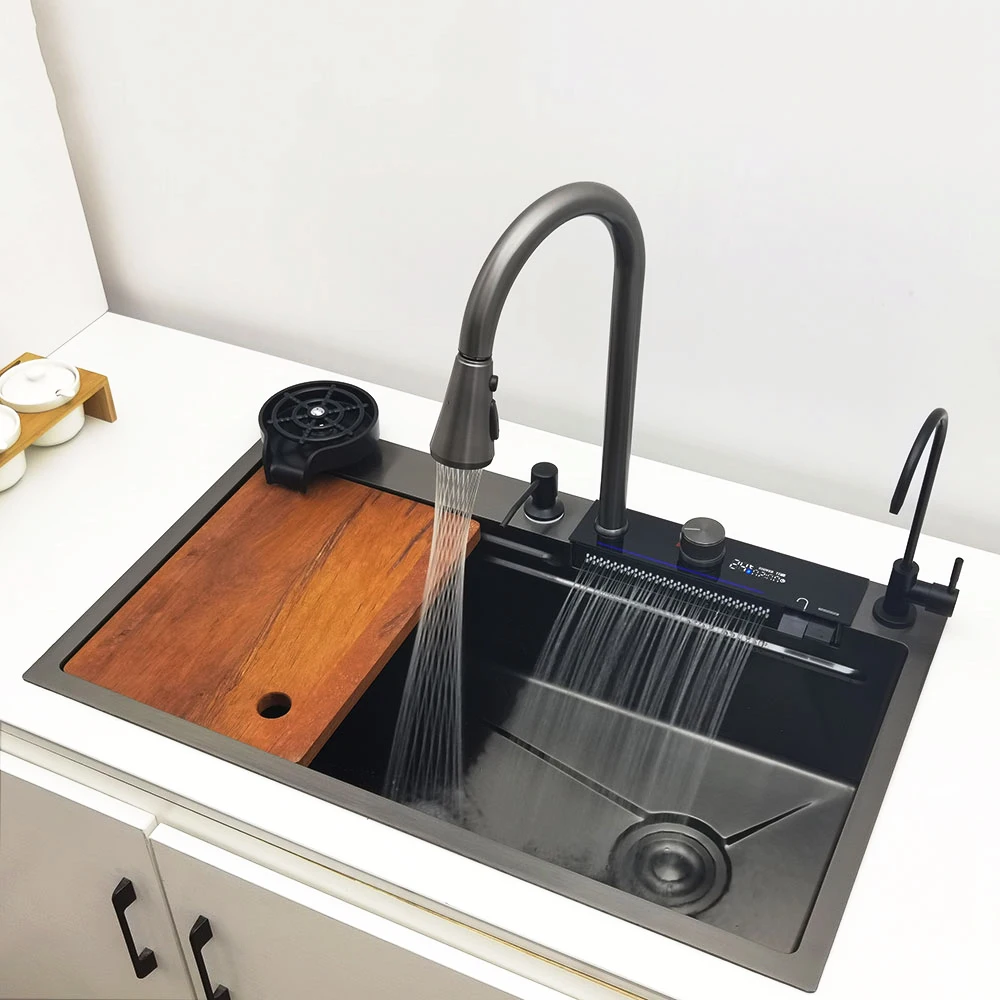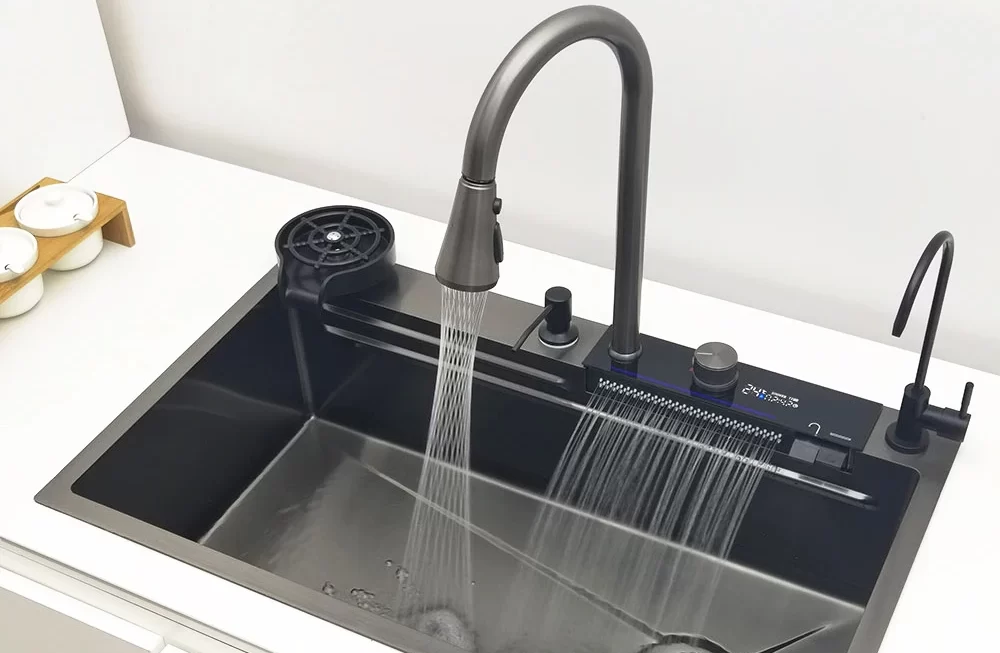Essential Tools for Measuring a Kitchen Sink
How to measure kitchen sink? When embarking on the task of measuring a kitchen sink, gathering the right tools is crucial for accuracy. Here’s a list of essential items you’ll need to ensure you get the measurements right:
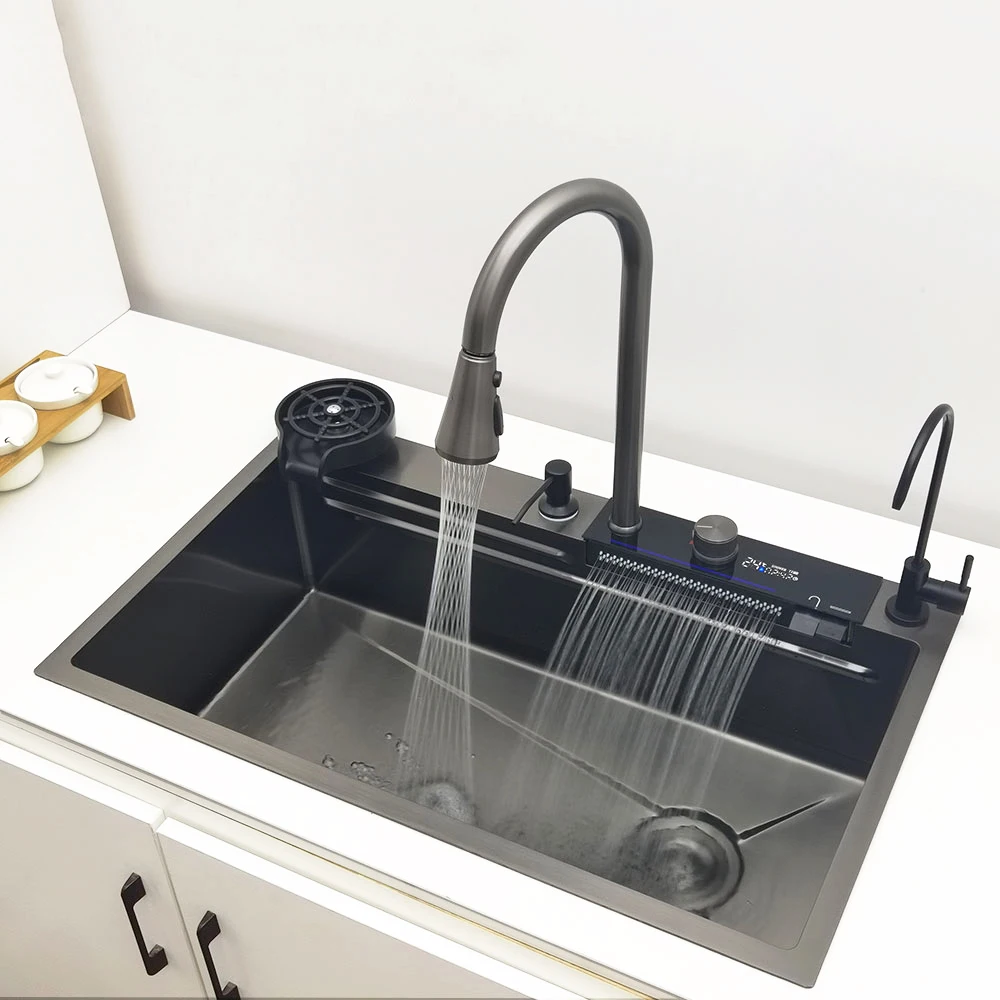
- Tape Measure: This should be long enough to measure the full length, width, and depth of the sink area.
- Straight Edge or Ruler: A straight edge helps measure distances more accurately when a tape measure’s flexibility might pose a challenge.
- Pen and Paper: Recording your measurements as you go is vital. This avoids confusion later.
- Level: Ensuring everything is level is key, particularly for undermount sinks that require precise alignment.
- Flashlight: This can be helpful to illuminate dark cabinet interiors, allowing better visibility when measuring.
- Radius Gauge (Optional): If your sink has rounded corners, a radius gauge is helpful for determining the curve’s precise angle.
With these tools in hand, you’ll be set to accurately measure your kitchen sink and prepare for either a replacement or a new installation. Remember, even with the simples tools, precision is paramount to avoid post-installation issues.
Step-by-Step Guide to Measuring Top-Mount Sinks
When choosing a new top-mount kitchen sink, measuring correctly is key to a perfect fit. Here’s a simple, stepwise approach to measuring top-mount sinks:
- Measure the Countertop Opening: Start by measuring the inside dimensions of the opening in your countertop. This tells you the maximum sink size that will work.
- Account for the Sink’s Rim: Make sure the countertop opening is slightly smaller than your sink’s rim. The rim should overlap the countertop edges.
- Consider the Material Thickness: Measure the outer edges of the sink’s underside. Some materials, like thick cast iron, can take up more space than others.
- Remember the Backsplash: Leave enough room between the sink’s edge and the backsplash. This ensures you can install your faucet without space issues.
- Check Plumbing Clearance: Ensure the sink basin doesn’t interfere with existing plumbing, especially if the drain outlets are already in place.
- Double-Check Your Measures: Always measure twice to avoid errors. Use precise tools and note down your measurements carefully.
Follow these steps to ensure that your top-mount kitchen sink will fit properly and look great in your kitchen. Remember to select a sink that will meet your functional needs and match the style of your space.
Determining the Dimensions for Undermount Sinks
When it comes to undermount sinks, precision is even more important. Undermount sinks require a perfect fit for a sleek look and optimum functionality. Here are key points to help you determine the correct dimensions for undermount sinks:
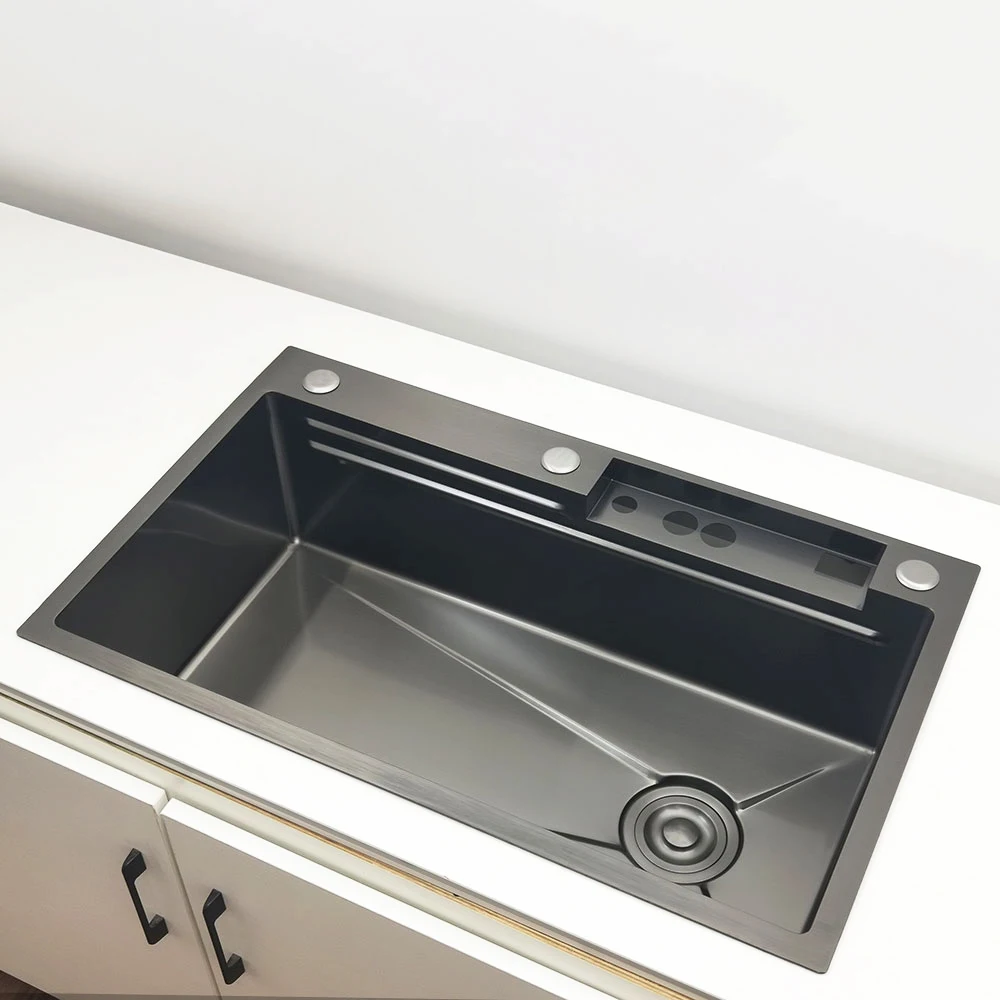
- Start with the Countertop Opening: Similar to top-mount sinks, begin by measuring the countertop opening. These measurements will guide you to the right-sized sink for your space.
- Focus on the Interior Fit: The sink’s interior should align seamlessly with the countertop’s underside. Ensure the size matches the opening minus the countertop thickness.
- Leave Space for Faucets: There must be enough clearance for the faucet installation. Check the distance between the sink’s edge and the countertop’s backsplash.
- Consider the Plumbing: Be mindful of the plumbing arrangement beneath the countertop. The sink should not obstruct any pre-installed drain outlets or pipes.
- Height Matters: Undermount sinks sit below the countertop level. Measure from the top of the cabinet to the drain outlet to determine the depth allowance for your sink.
- Account for the Cabinet Size: Take into account the supporting cabinet’s measurements. Make sure the sink is compatible with the overall cabinet dimensions.
By carefully measuring and considering these aspects, you can be confident in selecting an undermount kitchen sink that fits beautifully into your kitchen design. Ensure to recheck your measurements to secure a faultless installation.
How to Measure Sink Depth and Consider Plumbing
Measuring your kitchen sink’s depth is an important part of ensuring a good fit and functionality. Here’s a straightforward method to measure sink depth correctly while considering the plumbing:
- Measure from the Bottom: Start by placing one end of the tape measure at the deepest point of the sink’s interior.
- Record to the Top: Extend the tape to the top edge of the sink and note the measurement. This is your sink’s depth.
- Check Under the Cabinet: Go beneath the countertop and measure the distance from the top of the cabinet or supporting structure to the planned drain outlet. This ensures your new sink won’t be too deep.
- Assess Plumbing Space: Leave room around the sink for the P-trap and other plumbing components. Consider how the drain is oriented and where the water supply lines are located.
- Anticipate Pipe Connections: Ensure that there’s adequate space for the sink’s drain to connect with the existing plumbing without issues.
- Double-Check Everything: It’s wise to re-measure to make certain all your recorded dimensions are correct.
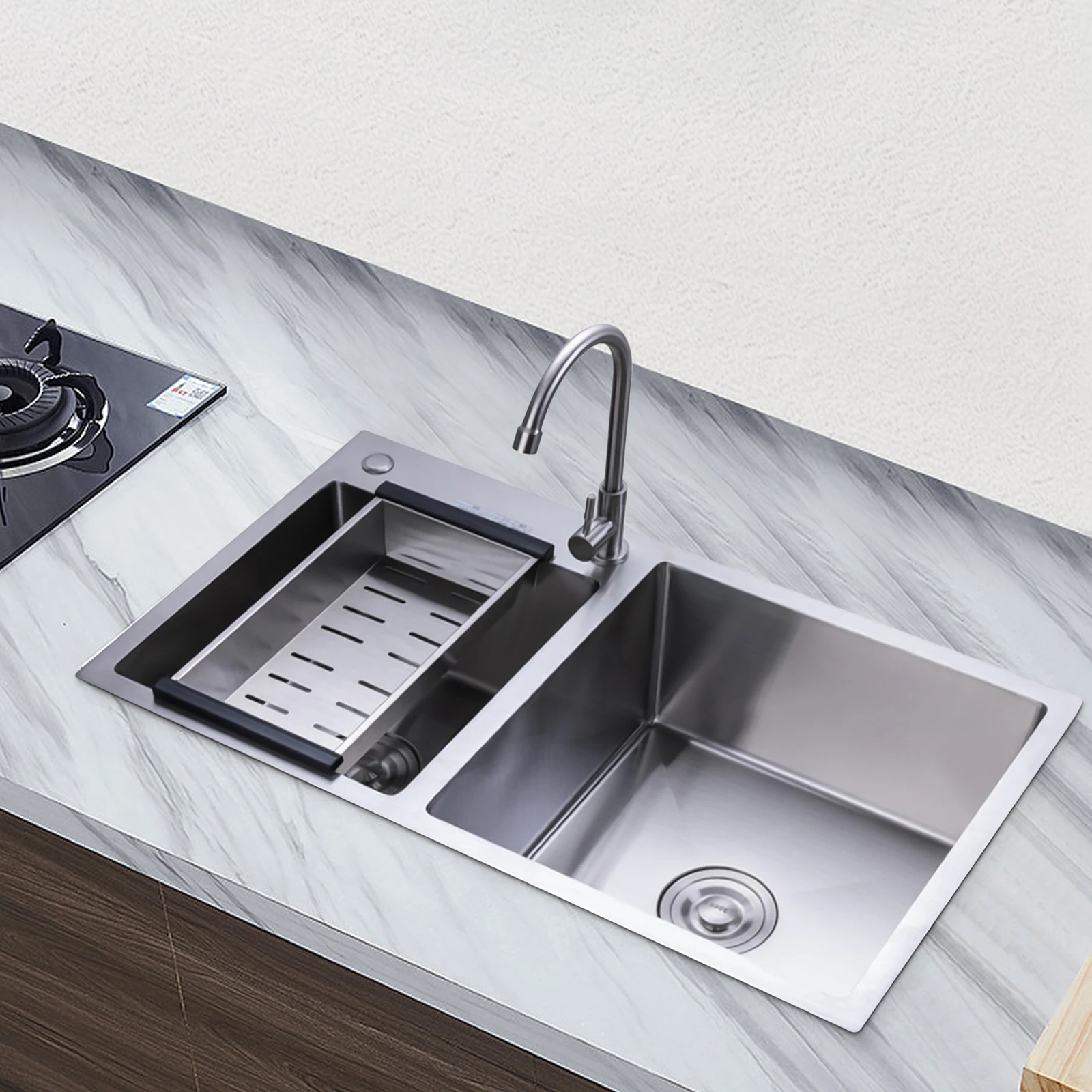
By covering these steps, you will successfully evaluate the necessary depth for your kitchen sink, taking into account the existing plumbing layout. Keep the measurements clear and straightforward to avoid any future installation problems.
Strategies for Measuring Farmhouse/Apron Front Sinks
Farmhouse sinks, also known as apron front sinks, have a distinct style that can add charm to your kitchen. Measuring these sinks requires a touch more attention due to their unique design. Here are the strategies to measure them effectively:
- Interior Basin Measurement: Like undermount sinks, start by measuring the inside of the basin. Make sure it fits within the countertop cutout.
- Account for the Apron: The apron front will extend to the edge of the counter. Measure the width and height of the apron to ensure it aligns with the cabinet fronts.
- Rim and Counter Fit: If your farmhouse sink has a rim, measure like a top-mount sink. The rim should overlap the countertop but keep within the cutout.
- Cabinet Size Check: Ensure the cabinet size can accommodate your apron front sink, especially if the apron is tall. You may need custom cabinets for tall aprons.
- Faucet and Plumbing Clearance: Leave enough space behind the sink for the faucet. Make sure there is no clash with the drain outlet underneath.
- Repeat for Accuracy: Measure twice to confirm your dimensions. Write down your figures and check them against the sink specifications you are considering.
By following these steps, you’ll be well-equipped to measure for a farmhouse apron front sink that will not only fit your kitchen space but also enhance its aesthetic appeal.
Understanding Standard Kitchen Sink Sizes and Their Uses
Choosing the right kitchen sink size is key to the functionality of your kitchen. Common standard sink sizes serve different purposes in the kitchen. Here’s a quick overview of standard sizes and what they’re generally used for:
- 22-inch sinks: Ideal for bar areas or small kitchens. Perfect for secondary sinks.
- 24-inch sinks: Good for small kitchens; limited in washing large items.
- 30-inch sinks: Larger, but still compact for most kitchens. Better for dishes and food prep.
- 33-inch sinks: Very popular; great for washing big pots and pans.
- 36-inch sinks: Good for regular cooks and hosts. Offers more space for kitchen tasks.
- 45-inch sinks: Largest option; comes with work areas for multitasking.
Using these standards, you can match the sink size to your specific kitchen needs. Small kitchens benefit from compact sinks, while larger kitchens can accommodate more spacious models. Think about your daily kitchen activities when choosing a size. This ensures your sink supports your cooking and cleaning routine effectively.
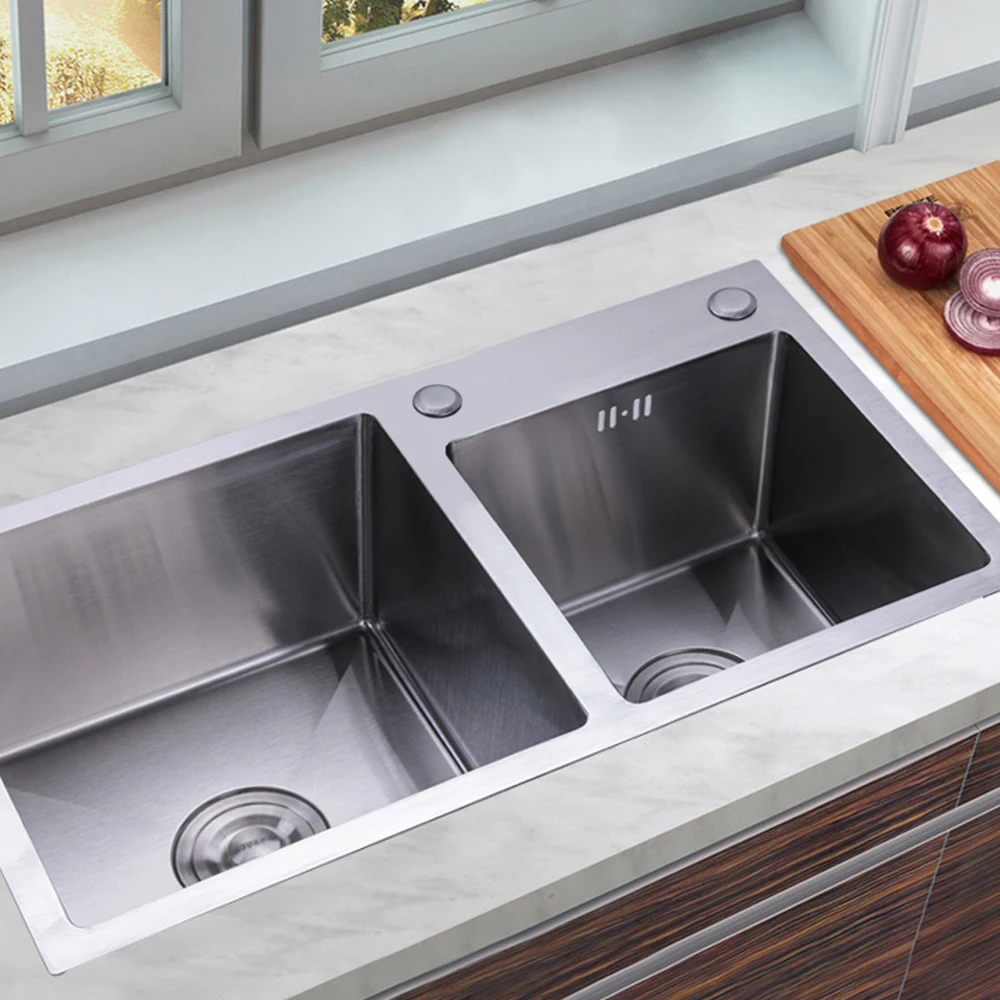
Types of Kitchen Sinks and How Size Influences Selection
Choosing the right kitchen sink is not just about style but also its practical use. How you plan to use your sink, the size of your kitchen, and your daily needs all play a role in determining the best sink type and size for your home. Here’s how size influences the selection of different types of sinks:
- Single bowl sinks: These vary in width from 22 to 33 inches. They fit well in most kitchen sizes and are suitable for general use.
- Double bowl sinks: Ranging from 30 to 48 inches, they are ideal for tasks like washing dishes by hand, as they have separate sections for washing and rinsing.
- Farmhouse/apron front sinks: With widths between 30 and 40 inches, their deep basins are great for handling large items and add a stylish touch.
- Top mount sinks: These can be as small as 15 inches to as wide as 48 inches. Their rims sit on top of the counter, affecting the overall counter space.
- Undermount sinks: These go from 24 to more than 36 inches wide and attach below the countertop, giving a seamless look.
Your pick must align with the kitchen’s look, feel, and capacity for fitting appliances. Also consider the sink material and how it might alter the overall size due to thickness. And remember, no matter the type, always double-check your measurements for a perfect fit.
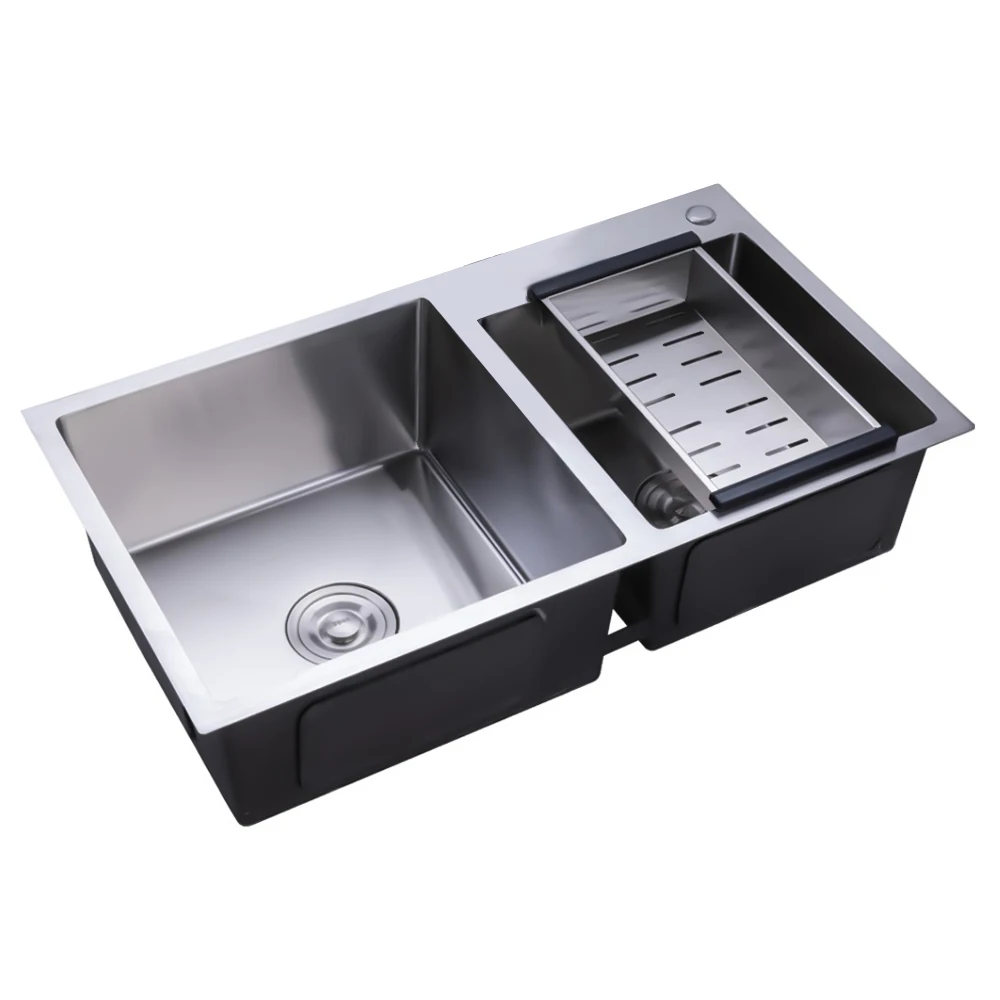
Tips for Accurate Measurements and Avoiding Common Mistakes
To ensure that your kitchen sink fits perfectly, careful measurement is key. Here are tips to make sure you get it right without falling into common pitfalls:
- Use the right tools. Confirm you have a tape measure, straight edge, level, pen, paper, and possibly a radius gauge if needed.
- Measure twice. Always check your measurements a second time to prevent any errors.
- Note the details. Write down all the numbers as you measure and label each one (length, width, depth).
- Check level. Use a level to confirm that surfaces are even. This is crucial for undermount sinks.
- Consider sink material. Remember that materials like cast iron can make a difference in overall dimensions.
- Double-check cutout size. Be sure the counter cutout is smaller than the sink’s rim for top-mounts, and matches the inside for undermounts.
- Factor in the faucet. Leave space behind the sink for faucet installation and ensure it doesn’t interfere with the backsplash.
- Keep plumbing in mind. Make allowances for P-traps and other plumbing connections below the sink.
- Account for cabinetry. Ensure the sink dimensions fit within the cabinet space allotted, especially for farmhouse style sinks.
By sticking to these guidelines, you can sidestep common measurement missteps and be on your way to installing a kitchen sink that fits flawlessly and functions well.
